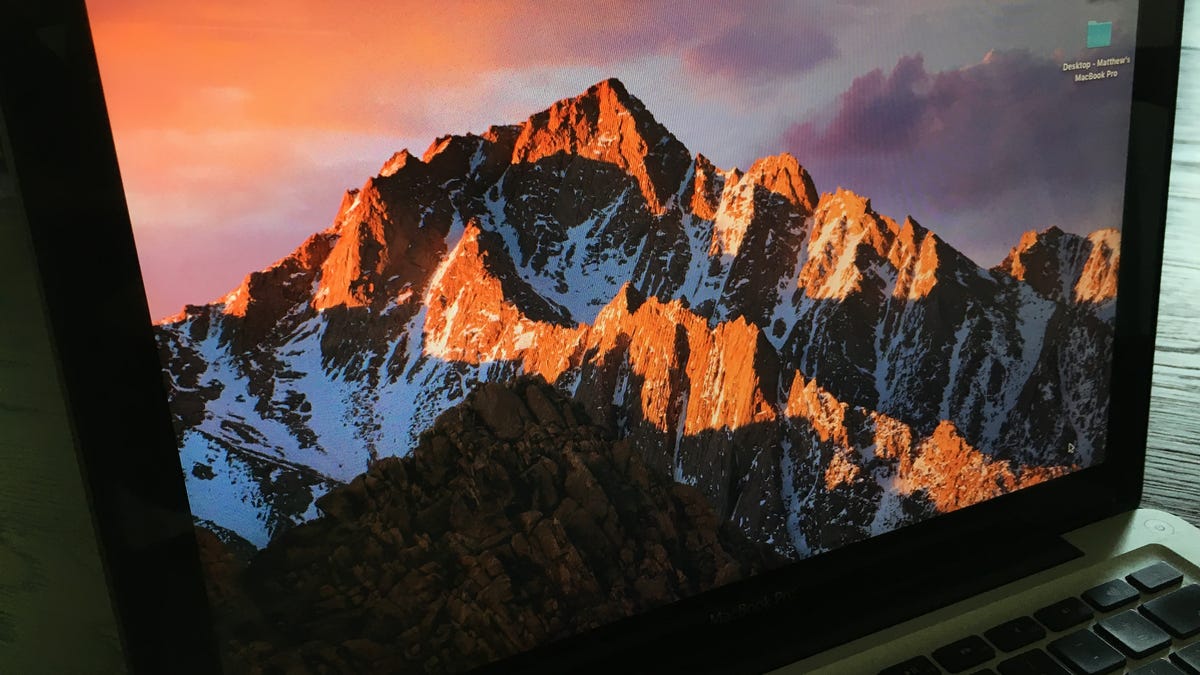MacOS Sierra has arrived -- here's how to download and install it
MacOS Sierra is here. Learn if your Mac can run Apple's next computer operating system and, if so, how to download and install it.

Apple's next Mac operating system, MacOS Sierra, is here. Siri integration headlines the new features Sierra introduces, but the update also features optimized storage via iCloud Drive, a universal clipboard, a picture-in-picture video player, auto unlock via Apple Watch and Apple Pay on the Web.
As with past OS X releases, MacOS Sierra is a free update via the Mac App Store. Learn if your Mac is compatible with MacOS Sierra and, if so, how to prepare it before downloading and installing the update.
1. Determine if your Mac makes the cut
The first thing to do as you prepare for MacOS Sierra is to check to see if your Mac is compatible; not all Macs will be able to make the leap. If your Mac is from early 2009 or earlier, you're out of luck. According to Apple, "all Macs introduced in 2010 or later are compatible. MacBook and iMac computers introduced in late 2009 are also compatible." Breaking it down, the Mac model compatible with with Sierra are:
- MacBook: late 2009 and later
- MacBook Air: 2010 and later
- MacBook Pro: 2010 and later
- iMac: late 2009 and later
- Mac Mini: 2010 and later
- Mac Pro: 2010 and later
To find the vintage of your Mac, click the Apple in the upper-left corner and click About This Mac. Under the OS listed at the top, you'll see the year of your model next to its name.
2. Make room
Apple has been able to shrink the file size of its OS updates over the years, so you don't need to free up too much space to make room for MacOS Sierra. The download is only 4.78GB in size, but why not use the update as a good excuse to do a little housekeeping on your Mac? Delete any old apps or files you don't need or move some folders and files to the cloud via iCloud Drive or your preferred cloud storage service.
3. Back up your Mac
Before you perform a major operation like installing a new OS, you should alway perform a system backup to protect your data. Should the installation go awry, you don't want to lose important documents along with your photo and music libraries. Thankfully, Macs include a tool that make backups easy: Time Machine. Learn how to set up Time Machine on your Mac.
4. Download and install
MacOS Sierra is available as a free update via the Mac App Store. To get it, open the Mac App Store and click the Updates tab. MacOS Sierra should be listed at the top. Click the Update button to download the update. (If it's not there, just search on "sierra" and it should pop right up.) You can track the progress of your download on the Purchased tab of the Mac App Store.
After the download is complete, the MacOS Sierra installer will launch. Simply follow the instructions to install the update.
Once you have installed the update, get everything you need to know about MacOS Sierra.

